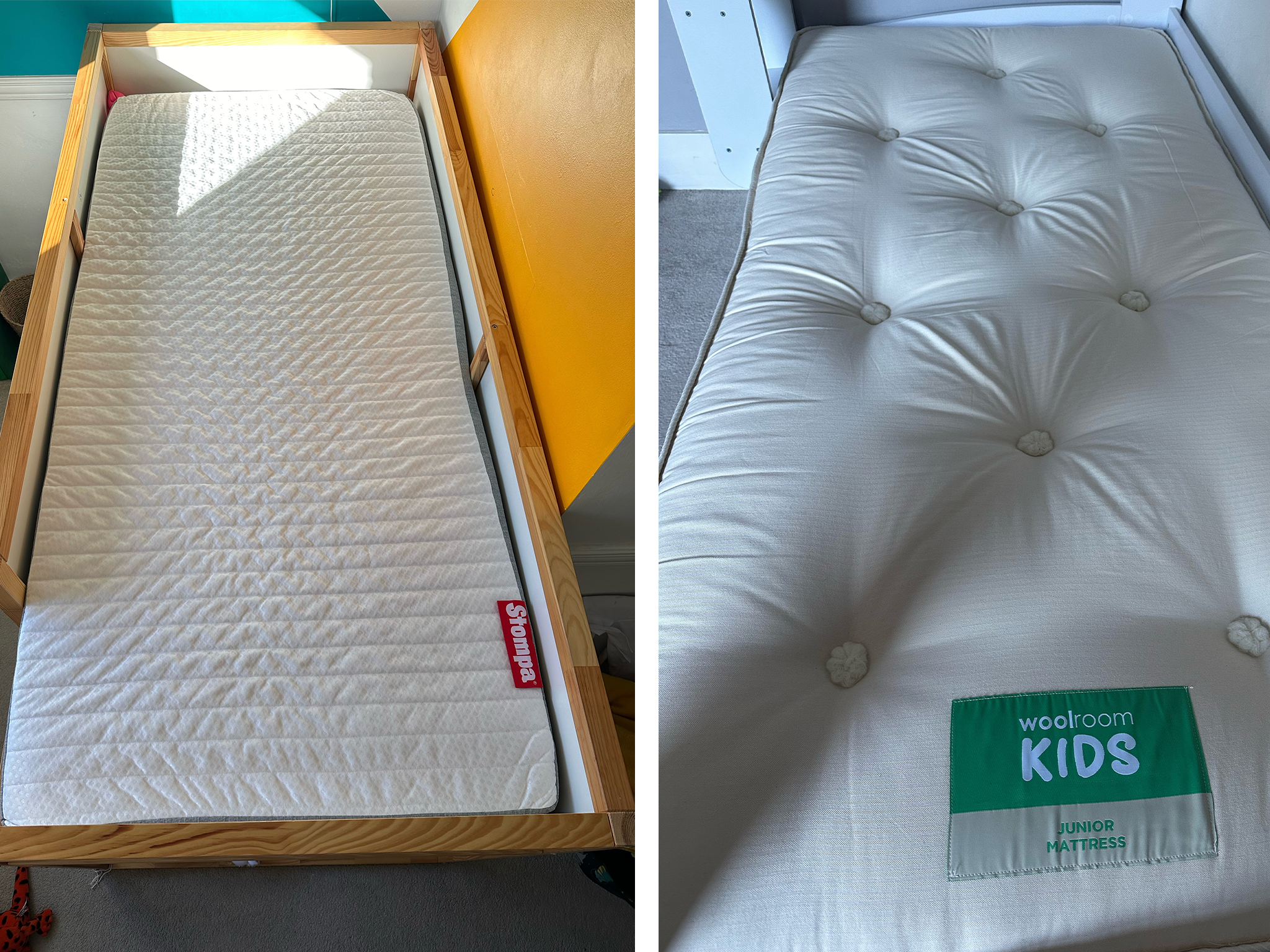Choosing the best mattress for your child is hugely important, yet it’s not an easy task. There are lots of mattresses out there, and their marketing gives conflicting advice about what’s best for children.
In order to help make it a little easier, I consulted Simon Williams from the National Bed Federation for advice. He recommended that you choose a mattress “made by a reputable manufacturer,” and “purchase it from a trusted retailer”. The mattress should also display the BS 7177 label for flammability standards.
It’s recommended that babies sleep on a firmer surface, but as your child grows, they might find they prefer something with a bit more give. With this in mind, Williams said it’s “best to buy a mattress that is described as medium firmness, which should provide a good balance of support and comfort”. You’ll also want to consider whether you want the mattress to fit a bunk bed or a cabin bed, and check that the top of the mattress is at least 16cm from the top of the side and end rails.
And then comes the cost. There’s no denying that mattresses are expensive, but Williams says, “Do not buy on price alone. Look to spend as much as you can comfortably afford, and remember that every £100 spent on their mattress works out at less than 4p per night over seven years.” For this guide, I’ve weighed up the price with quality, comfort, and durability to come to a final assessment.
After weeks of trialling, with the help of my team of testers, ranging in age from three to 13, I found the Stomper’s pocket spring mattress the best mattress for kids. It scored highly on comfort and provides plenty of support for growing bodies. However, it’s far from your only option. I’ve also tested brilliant mattresses that are suitable for bunk beds, those made with natural materials, and even double-sided ones that you can flip for a different kind of support. Similarly, the team has tried and tested everything from the best kids’ duvets to the best kids’ bedding.
How I tested

I recruited a number of kids from three-year-olds right up to teens to test out more than 20 different mattresses. I could then whittle it down using the following criteria:
- Comfort: A good night’s sleep often comes down to the feel of the mattress, so I collated my team of testers’ opinions on softness, sink, cushioning and pressure relief.
- Support: I considered the filling and whether this translated to a supportive feel. Edge-to-edge support is also great, as it prevents sagging and your little one from rolling off. Meanwhile, some mattresses offer different kinds of support tailored to different needs and age groups.
- Care: I favoured the mattresses that had features that would make it easy to care for, such as zip-off washable covers. Even better, some don’t need to be flipped or turned.
- Delivery and set-up: I considered ease of set-up and how long each one took to expand.
- Value for money: Price and value for money were key factors I considered because, even though kids will grow, every mattress should feel worth the investment without breaking the bank. I looked at how each mattress balanced cost with quality, comfort, and durability.
Why you can trust IndyBest reviews
Zoë Phillimore is a journalist and editor who has been writing review features for IndyBest since 2021. As a parent, she specialises in the best products for kids – and has a no-nonsense approach to recommendations. She also understands the importance of a child’s sleep setup being as comfortable as possible to ensure they get enough shut-eye. Importantly, she consulted experts on fabrics and construction, as well as a team of kids to get their honest feedback on each one.
The best mattresses for children 2025 are:
- Best overall – Stompa S flex airflow children’s pocket spring mattress: £229, Johnlewis.com
- Best budget buy – Stompa S flex airflow children’s mattress: £179, Johnlewis.com
- Best premium children’s mattress – Panda London bamboo hybrid mattress: £649, Pandalondon.com
- Best hybrid – Simba hybrid kids’ mattress: £399, Simbasleep.com




